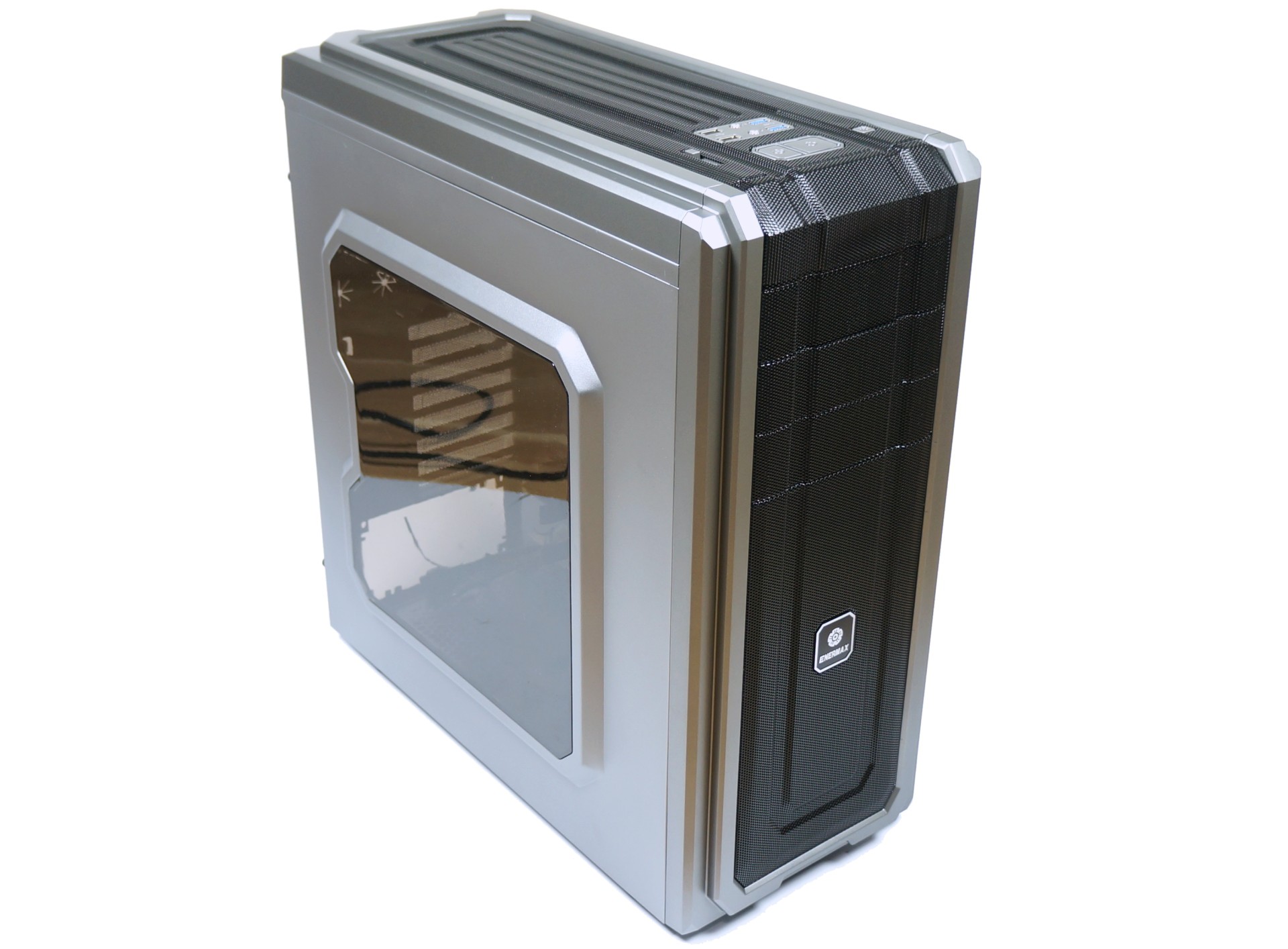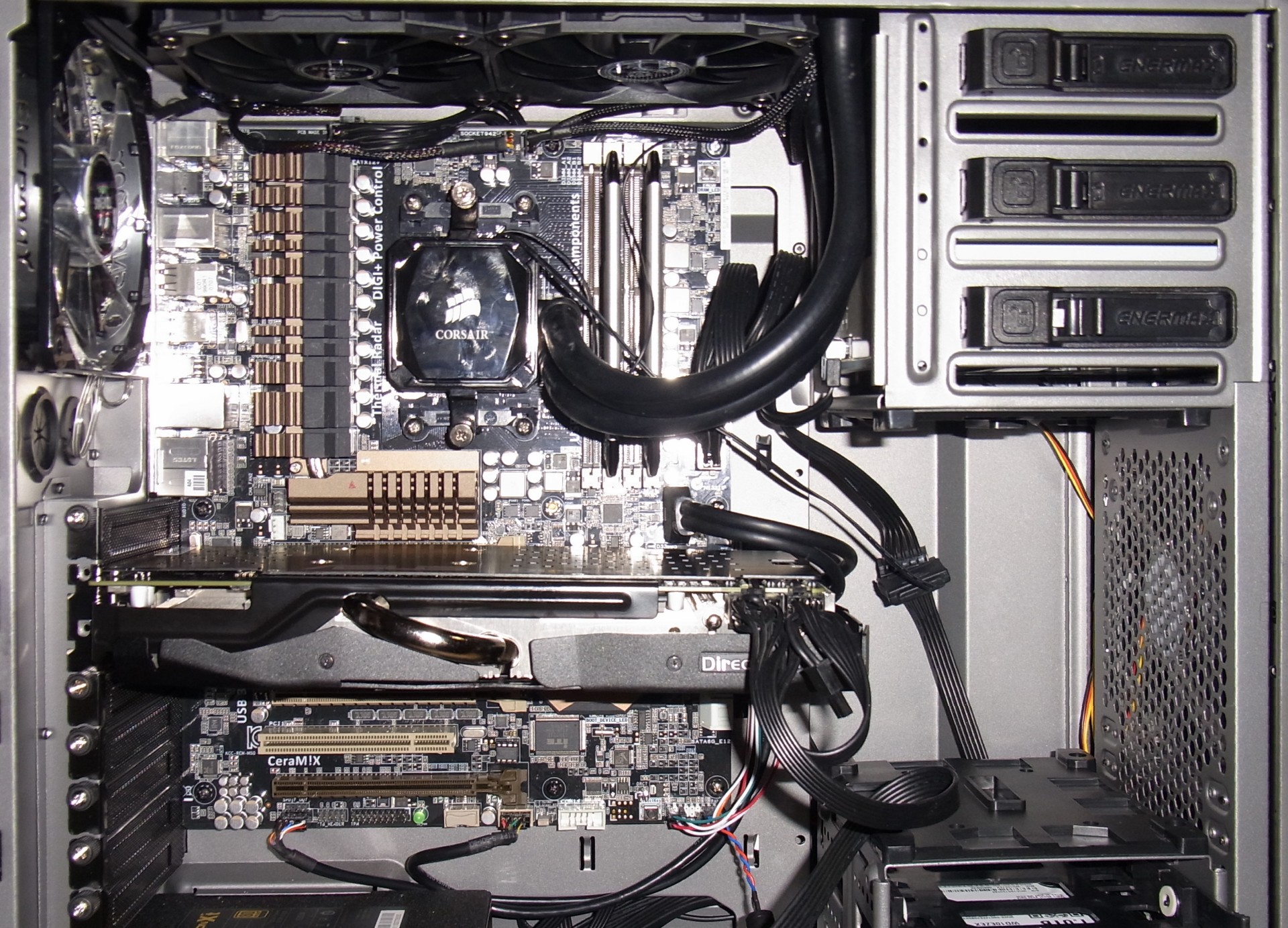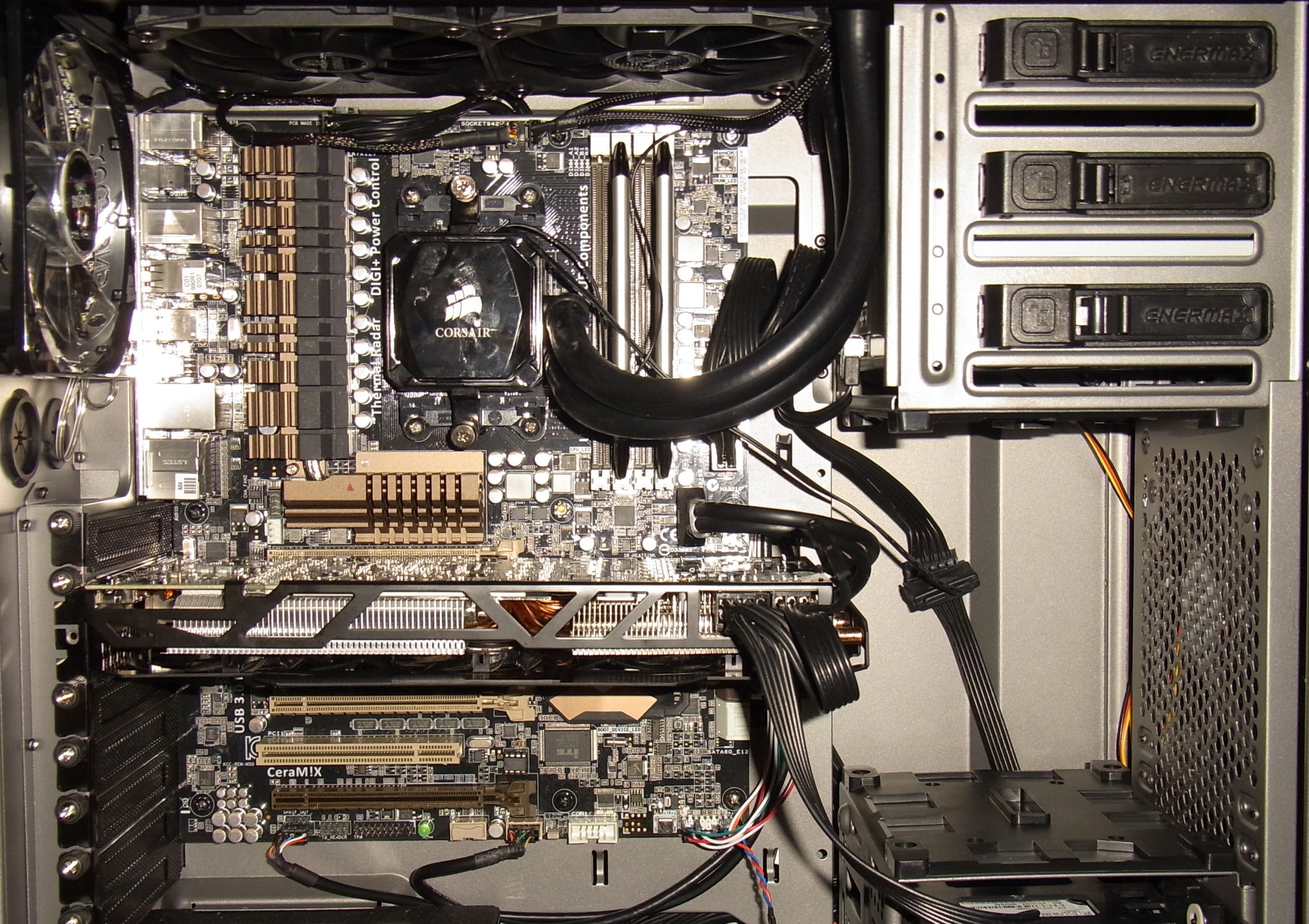Does Radeon R9 290X Behave Any Differently In A Closed Case?
We're in the process of testing Radeon R9 290X cards from AMD's board partners, and were curious how they all fare in a closed chassis. Corsair's deluxe Obsidian 900D offers lots of airflow, so we dusted off a more mainstream $80 case to test with.
What Happens When We Confine R9 290X To A Case?
We received plenty of feedback about our work with AMD's Radeon R9 290X in an open test bed, despite careful attention to maintaining constant room temperatures. After following up with some measurements in Corsair's well-ventilated Obsidian 900D, I found that some cards fared even better inside an enclosure than out. Eager for more information, I sought out a mainstream chassis to continue the collection of data.
I picked Enermax's Fulmo ST, which isn't available from Newegg right now, but does show up elsewhere under $100. That seemed like a good price on a practical mid-tower case. Realism was the goal, so I avoided big towers and some of the excessively cheap solutions that show up in our System Builder Marathon (I tend to think if you're buying an expensive graphics card, you're probably putting it into a nice chassis).
In order to create more of a cooling challenge, I used an overclocked AMD FX-8350 running at 4.4 GHz with a closed-loop liquid cooler and fan running at a constant 800 RPM. Using this set-up, the path warm air from the graphics card would normally take is largely blocked. Adding a second 800 RPM exhaust fan in the back of the case helps with circulation, though.
The platform's fan control was set as conservatively as possible, spinning the coolers around 600 RPM. This configuration should give us an idea of whether AMD's latest is viable in smaller enclosures (or not).
All of the cards are set to Quiet Mode, since the third-party cooling solutions do a much better job of maintaining clock rates than AMD's reference effort.
| CPU | AMD FX-8350 (Piledriver) Overclocked to 4.4 GHz |
|---|---|
| Cooling | Corsair H100i, 2 x 120 mm Fans (800 RPM) |
| Motherboard | Asus Sabertooth FX990 Rev. 2.0 |
| RAM | 2 x 4 GB Corsair Vengeance DDR3-1866 |
| Storage | Adata Premier Pro SP900Western Digital Caviar Blue 1 TB |
| Case | Enermax Fulmo ST |
| Power Supply | Enermax Revolution X't 530 W, 80 PLUS Gold |
| Operating System | Windows 7 Ultimate x64 |
| Drivers | AMD Catalyst 13.12GeForce 331.82 |
| Benchmarks | Metro: Last LightBioshock InfiniteBattlefield 4 (Single-Player)Crysis 3 (DirectX 11) |
Reference card: Gigabyte GeForce GTX 780 Windforce OC
Asus R9 290X DirectCU II
Gigabyte R9 290X Windforce OC
Sapphire R9 290X Tri-X
Let's take a look at how these cards perform in tight confinement.
Get Tom's Hardware's best news and in-depth reviews, straight to your inbox.
Current page: What Happens When We Confine R9 290X To A Case?
Next Page Temperatures And Noise
Igor Wallossek wrote a wide variety of hardware articles for Tom's Hardware, with a strong focus on technical analysis and in-depth reviews. His contributions have spanned a broad spectrum of PC components, including GPUs, CPUs, workstations, and PC builds. His insightful articles provide readers with detailed knowledge to make informed decisions in the ever-evolving tech landscape
-
solix This surprises me a bit after Tom's 280x roundup where the Asus DCII really came out nicely with regards to both acoustics and temps conceding in clocks to the faster but louder toxic card. Obviously this is a different chip with different properties, but fundamentally you'd expect mostly similar results with respect to TDP.Reply -
bemused_fred Ahhh, finally: R9-290x cards with consistent performance and bearable accoustics.Reply -
Novuake OK so the reason why this card is not performing through the roof :PowerTune is keeping thermals AND power consumption in check.Now for a nice overclock to negate that effect and the 290 and 290x will perform through the roof.Wish I could afford one now... :(Reply -
solix To my point, and sorry for the double post:http://www.tomshardware.com/reviews/radeon-r9-280x-third-party-round-up,3655.htmlPage 12This operates on the assertion that the Toxic cooler for the 280x is quite similar to the 290x Tri-x, but that is conjecture. I'm sure there are subtle differences (though maybe those make all the difference in the case of the 290x).Page 6Subjectively the Asus sounds quietest to me in terms of the kind of noise it produces.Page 4,5Toxic is a good 8db louder as measured (and almost the loudest) but middle of the pack in relation to all the cards with regards to temps, and slightly cooler in temps than DCII and windforce by a few degrees.Page 2The Toxic is about 7% higher in clocks.The differences in the 290x are much more pronounced with the DCII and windforce losing in both aspects of temperature and noise. The open bench tests were more similar to the 280x tests which I assume were open bench, but the DCII and WF still came out ahead in terms of noise even in that test. Sapphire must really have reworked their Toxic cooler or this is a new design we didn't see on the 280x cards.Reply -
west7 i think it should be included vrm temps in the article well i have hd7950 vapor-x the it have the worst vrm cooling i've seen temps in gaming is around 80°C on stock clocks(950/1250) and i'm getting this temps on very cooled case (cm haf912 with tree fans 2x200mm 1x140mm) so it will be very nice if you add vrm temps in your next reviewReply -
de5_Roy is that an optical illusion or the gigabyte gtx 780 card is about to succumb to gravity... the asus card seems to be bending a bit as well...Reply
-
vertexx Good article. I have also found from experience that good case airflow (i.e. well thought out directional airflow - not miscellaneous fans all over the place) can be much better at facilitating GPU cooling performance than open (and stagnant) air.MSI has IMO the best cooler out there in its Gaming series - I think they've struck the best balance of price, cooling performance & noise reduction of any card with this generation. I hope to see one in the round-up.On the CLC, do you have that setup pulling air into the case or exhausting out?Reply





